Heuretic:
1: (logic) The branch of logic concerned with discovery or invention
The notion of photogénie, as articulated by French filmmaker and philosopher Jean Epstein, is a quasi-mystical quality of the cinema-image to imbue meaning and moral enhancement into environments and the objects within them, and to disassociate and break apart space-time into a new and tactile screen-reality [1] . It was only one of many theories that evolved during the period of the French narrative avant-garde but a theory that articulates the energy and enthusiasm of the time. This essay takes the opportunity to draw a connection between Gilles Deleuze’s conceptions of visual aesthetics and Jean Epstein’s manifesto-like imaginings [2] . It uses terminology and various conceptual frameworks derived from Deleuze’s “Francis Bacon; The Logic of Sensation” [3] , and applies them to a set of Jean Epstein’s films, primarily from the period 1927 to 1929. An investigation into what these two thinkers have in common, and how one might illuminate the other, is justified by what Robert B. Ray describes as the need for a ‘heuretic’ theory of film. Ray, in his 2001 seminal essay ‘How A Film Theory Got Lost’ [4] , is arguing that film theory needs to be reinvigorated and rediscovered, and the heuretic method offers new pathways, in a contemporary setting, that can challenge embedded conventions of both popular film form and popular film theory. This essay first establishes some core tenets of photogénie through visual analysis of the selected films, and continues on to expand the scope of what photogénie as a conceptual framework for the cinema can offer us as thinkers and makers, through an appropriation of Giles Deleuze’s notion of the aesthetic of ‘sensation’.
Locating Photogénie (I): La Glace à trois faces (Epstein, 1927)
Jean Epstein was prolific in his writings between 1920 and the late 1940’s. His essay “On Certain Characteristics of Photogénie” (1923) and later collection of essays titled “The Intelligence of a Machine” (1945) are the central defining texts for exposition of his theorising on film-art. Also, more recently, scholars have started a process of reappraisal of Epstein’s ideas; most notably in the edited anthology “Jean Epstein: Critical Essays and New Translations” [5] . It is to this more contemporary series of publications and thought that this discussion hopes to relate and from which it takes its cues. These contemporary explorations of photogénie tend to expand and build upon Epstein’s original musings, as in Katie Kirtland’s “The Cinema of the Kaleidoscope,” and to find new ways to update his significance in relation to the technological era of the 21st century, as can be seen in Trond Lundemo’s “A Temporal Perspective: Jean Epstein’s Writings on Technology and Subjectivity.” [6]
Photogénie has become a byword for Epstein’s broader practice-based methodology in which movement, emotion, and atmosphere are favoured over linear story telling. Photogénie can be termed as a methodology as its core tenets reflect (or seek to represent) the attitude, stylistic orientation and intention of the filmmaker or artist. The filmmaker who pursues photogénie as a guide seeks images and combinations of images that articulate transformation, expression, the close-up, movement, temporality, rhythm, and the augmentation of the senses[7] . Through these tropes and techniques, Epstein claims to produce cinematic works that provide a conduit for the audience to interpret, create and enhance perceptions of the world around them, and their relationships to other beings and objects.
In practice, Epstein pursued these ‘enhanced perceptions’ most vigorously in his experimental and independent works. In his 1927 short La Glace à trois faces (The Mirror Has Three Faces; firmly considered part of the narrative avant-garde movement of the time [8] ) we can see that the themes of seeking out love, the subsequent emotional and mental consequences, existential crisis and eventual nihilism, are all realised through sequences in which the protagonist (unnamed throughout the duration of the film) is placed in situations of his own design, that both narratologically and visually come apart at the seam (one might think of the seam quite literally as an edit, or ‘cut’). The thematically desired effect of causality and finality (in this case the pursuit of unattached love interests and trysts) prove elusive for the protagonist; always out of focus; always distant. This distance and blurriness are both thematic and visually represented. The image is made to be out of focus for precise moments, and the montage deliberately disrupts the harmony of a more standard version of cinematic spatiality and temporal logic. Epstein creates a magnified and subjective characterisation of the character, reflecting his emotional and mental state, but also weaves an unsympathetic and disorientating cinematic timeline.
In a scene in which the protagonist is at dinner with Pearl (Olga Day) (the first of his love interests), focus, the close-up and the eyeline of the characters are combined for a curious exploration of temporality and spatiality. At this point in the film, Pearl has been introduced as a distressed woman relaying an account of the events of the evening prior. The evening in question begins with the couple getting dressed as they make plans to go out. They arrive at the venue and are shown to their table for two. The protagonist (René Ferté) is directing his attention toward other patrons, specifically other women, attending the restaurant. Meanwhile, Pearl finds flirtatious interest in a young bachelor sitting across from her. Momentary interactions and isolated reflective glances are puzzled together with dizzying abandon; that is, abandon of the convention of eye-line continuity, perspective, and narrative flow (in favour of a flow of emotional interest).
The sequence is from the perspective of Pearl. The narrative function is to relay an image of the protagonist from her point of view, via her memory of him, as she vents her distress as he has subsequently broken things off. Pearl remembers the events of this evening with a blend of remorse and cynicism:

Fig.1. Jean Epstein, La Glace à trois faces, 1927. Pearl glances to make contact with the stranger sitting across from her.

Fig.2. Jean Epstein, La Glace à Trois Faces,1927. Pearl’s flirtatious interest; the young man sits on the other side of the dining room from Pearl.

Fig.3. Jean Epstein, La Glace à trois faces, 1927. He leans backwards and into an out-of-focus position. This move changes the nature of the medium close-up. The shot is now more reminiscent of a subjective gaze rather than an objective view of the character’s eyeline. It also simultaneously disrupts the continuity of the shot-reverse-shot sequence, destabilising both the temporal and broader psychological coherence of the sequence.

Fig.4. Jean Epstein, La Glace à trois faces, 1927. An extreme close-up of this source of amorous interest further confounds any sense of objective spatial orientation. The angle disrupts the conventional 180-degree rule.

Fig.5. Jean Epstein, La Glace à trois faces, 1927. Fig. 5. An immediate reverse angle, extreme close-up on Pearl’s smile works to confirm the Cubist-like aesthetic that the sequence gradually develops. Note the out-of-focus photography.
Locating Photogénie (II): Cœur fidèle (Epstein, 1923)
Epstein’s highly original Cœur fidèle (The Faithful Heart, 1923) is an exemplary of early efforts in the French cinema to forge pathways of artistic advance for the cinema arts [9] . Contemporaneous art critic Waldemar George described Cœur fidèle as a melodrama reduced “to the state of an optical poem.” [10] This description serves as an inspiration for the overall approach to photogénie-as-methodology being applied here. The reduced state of the melodrama sufficiently describes the shift away from concerns of narratology, plot logic, a visual language based on causality, and the appearance of spatial, and temporal, coherence. The notion of an ‘optical poem’ suggests the possibility of understanding each frame, shot, shot-to-shot relation, overall rhythm, and eb and flow of a sequence, in terms of poetic devices such as meter, stanza, caesura, couplet or refrain. Indeed, once one takes into account the fragmentary nature of Epstein’s shot compositions and editing structures, these terms become much more illuminating and appropriate than any inheritance from literary theories surrounding the novel (such as ‘act’, ‘psychological realism’, or even ‘plot’) [11] .
During Cœur fidèle, scenes are quite often structured as a series of moments, surveyed using rhythmic and metric montage editing techniques; that is, editing techniques that serve to bring non-continuous shots together to create a coherent whole [12] . In one scene in particular, the two lovers, Marie (Gina Manès) and Jean (Léon Mathot), at the centre of the narrative, meet and express their feelings for one another; though under the ominous shadow of the threat of rival, and violent gangster, ‘Petit’ Paul (Edmond van Da‘le). The drama takes place against the backdrop of the Marseille docklands (see fig. 6). The pace is slow but moves at an evenly distributed tempo (one could invoke the poetic devise of meter). The purpose is not to establish the passing of time and narrative information (again, narratology is of lesser concern than mood) but rather to create a sense of the subjective experience of ephemerality, the sensation of the present moment, and the past; memory. Each different expression of emotion, that is articulated across multiple shots, might be thought of as a stanza (to continue the annotation of Cœur fidèle as optical poem). The array of emotions and actions conveyed in the sequence helps to build the subtext, and the story, but there is also an apparent subjective, first-person, orientation. This first-person perspective is delivered through the use of dissolves, which signal inner-thought, subjective views of the respective character in frame, and sentimentality (see fig.9). The cross-dissolves, and repetition of the image of moving water, might be thought of as caesura, or refrain, respectively (see fig. 6 – 9).

Fig.6. Jean Epstein, Cœur fidèle, 1923. The docks as a location.

Fig.7. Jean Epstein, Cœur fidèle, 1923. Close up on Jean (Léon Mathot).

Fig.8. Jean Epstein, Cœur fidèle, 1923. The emphasis on water visualised through cross dissolves in the editing.

Fig.9. Jean Epstein, Cœur fidèle, 1923. The emphasis on water visualised through cross-dissolves in the editing. The cross-dissolve becomes metaphorically significant; the water symbolising unconscious forces, love, and the connection between the two lovers.
Instead of using the montage to simply convey story information, Epstein has used the montage technique to give the audience insight, respectively, into Marie and Jean’s mind’s-eye. By utilising an intuitive, more visceral approach to pace, and repetition of images, transitions, and frames, Epstein’s montage is more a montage of hypnosis, rather than one of attractions [13] i.e. the effect of the montage is less spectacle-orientated, with less emphasis on dialectic structure, and generally more dream-like.
Epstein’s cinema, evidently, proceeds from instinct, rather than intellect. Photogénie, therefore, is a method whereby the filmmaker searches for innovations in visualisation and dramatization that appeal to the emotions and the senses in unexpected ways. For Epstein narrative is still an important aspect of the cinematic experience, but the realisation of the subtext and the theme must be discovered through invitation and an appeal to the audience’s thinking and feeling selves. Narrative structure and visualisation must not seek to dictate via design the meaning of the cinema image. More importantly, the cinema image must not pretend to transform the world into a rational, intellectual structure of narrative coherence. It must in fact do the opposite; the cinema-image must reflect the disorientation of the world of lived experience in all its vagueness, momentary clarity, fragmentation and complexity.
Figuration / Sensation: Possible Experience in La Chute de la maison Usher (Epstein, 1928)
In his treatise “Francis Bacon: The Logic of Sensation”, Gilles Deleuze suggests that Francis Bacon’s paintings are a “relationship not of form and matter, but of materials and forces.” [14] This framework could be co-opted to further refine Jean Epstein’s sentiment. Photogénie could be described as a cinema not of form and formality, but of materials and forces; in more filmic terms, a cinema of objects (materials), and the ‘liveness’ of the environment in which those objects are embedded (forces). Furthermore, one could add that this cinema aesthetic is not concerned with matter (simply things-in-themselves) but with the correlation between things-in-the-world and the perceiving human subject. It must be acknowledged that the two-dimensional canvas used by Francis Bacon, and the time-based, moving image-image form used by Jean Epstein, have diverging qualities and in many situations can’t be compared or reconciled. Never-the-less, aesthetic and perceptual pursuits by the artists can be compared. Just as in Francis Bacon’s art, by seeking out this correlation between ontology and the perceiving human subject, the moving image makes some aspect of reality reveal itself to the audience. The invisible is made visible.
Sensation, according to Deleuze, “is that which is transmitted directly, and avoids the detour and boredom of conveying a story.” [15] Deleuze’s ‘sensation’ and Epstein’s photogénie are kindred; this quote may be applied equally to Epstein’s aesthetic ideal. Photogénie can be evoked as a particular quality of cinema that directly transmits what is real, though is equally resistant to direct representations of reality. The term ‘sensation’ is Deleuze’s choice for articulation of the significance, and tension, of the work of Francis Bacon [16] . Deleuze’s study of Bacon’s paintings discerned very distinct characteristics, which, it can be argued, have an affinity with the fore-mentioned descriptions of Epstein’s cinema and philosophy. This affinity relates to methods and relations between the artist, the reality he seeks to depict, and the audience to whom he speaks, though it will be shown that each artist, Bacon and Epstein respectively, pursue significantly different results.
Sensation could be used as a term to describe that aspect of photogénie (an image, a movement, a moment, or a sequence of images and moments) that captures an audience’s attention and reflects, via the screen, the subjective, sense based and less tangible ways in which we experience the world. Deleuze, in reference to Bacon, cites Immanuel Kant as foundational to his thinking on this point. Kant had dissociated aesthetics into two halves: the theory of sensibility as the form of possible experience (the “Transcendental Aesthetic” of the Critique of Pure Reason), and the theory of art as a reflection on real experience (the “Critique of Aesthetic Judgment” in the Critique of Judgment) [17] . In terms of the cinema, Epstein’s interest appears to reside in the Transcendental Aesthetic. Real experience is every-day lived experience. The cinema offers us a manipulated, equally real but less human (less organic), version of space and time. This manipulated version of space-time relates to possible experience. Deleuze locates this alternative presentation of space and time in Bacon’s art:
Within the round area, the Figure is sitting on the chair, lying on the bed, and sometimes it even seems to be waiting for what is about to happen. But what is happening, or is about to happen, or has already happened, is not a spectacle or a representation. [18]
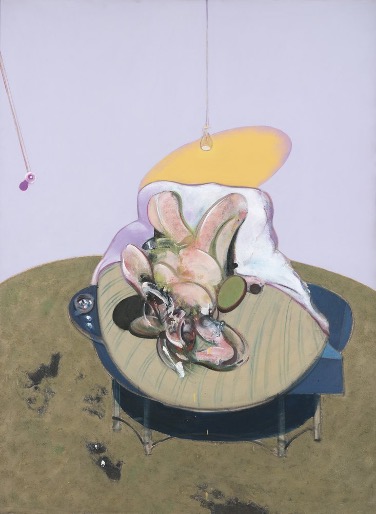
Fig.10. Francis Bacon: Lying Figure, 1969
The round area here is considered to be the bed or platform upon which the figure lies. The round area occupies the centre of the canvas.

Fig.11. Francis Bacon: Study for Bullfight no. 2, 1969
The round area here encloses the bull and the bullfighter and the action occupies the centre of the canvas. The action however seems suspended and unresolved. The two figures are fused together and both of them are individually incomplete.
Similarly, in Epstein’s cinema, the goal is not to promote spectacle (action), nor to achieve a representation (realism), but rather to find ways, through shot structure and editing, to create an effective sense on the screen that something outside of the ordinary purview of human perception of space and time is happening, or is about to happen, or has already happened. Another way to approach this idea would be to say that in Epstein’s cinema, action and spectacle are slowed down and fragmented so as to investigate what takes place in the new, opened up syntax of time and movement on screen. Rather than figures being contorted or fused together, as in Bacon’s artworks, it is space and time that is contorted and unresolved. The final effect is the same; that is, suspension of representations of the real, and a focus on the relationship between movement and things-in-the-world.
It is also important to note that Epstein placed great emphasis on the study of objects as well. In La Chute de la maison Usher (The Fall of the House of Usher, 1928), Madeline (Marguerite Gance) (wife to Roderick Usher {Jean Debucourt} and the central figure of causality for the mysterious ruminations of the house and its eventual ‘fall’) is buried in the family mausoleum after dying from a mysterious illness. The mechanical objects within the house as a result become slower, the mechanism of the clock works, but the pendulum moves at a slower pace. The duration of time becomes subjective and melancholic; experienced time is different from mechanical time because the weight of the past (memory) transforms it:
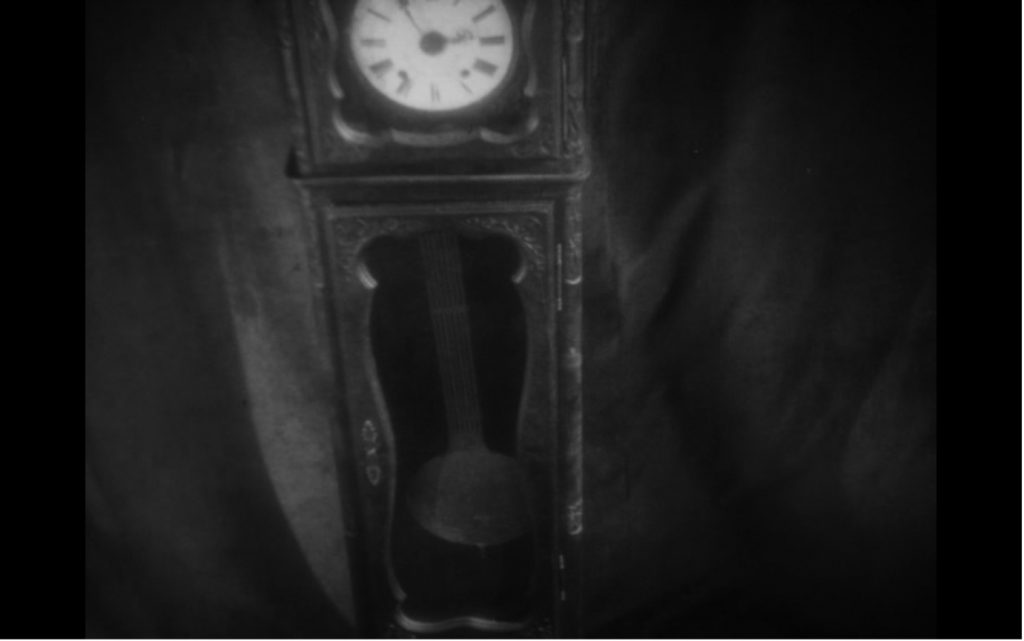
Fig.12. Jean Epstein, La Chute de la maison Usher, 1928. The clock moves at natural speed and is set against the curtain blowing in the wind. The wind creates movement and a tempested atmosphere.
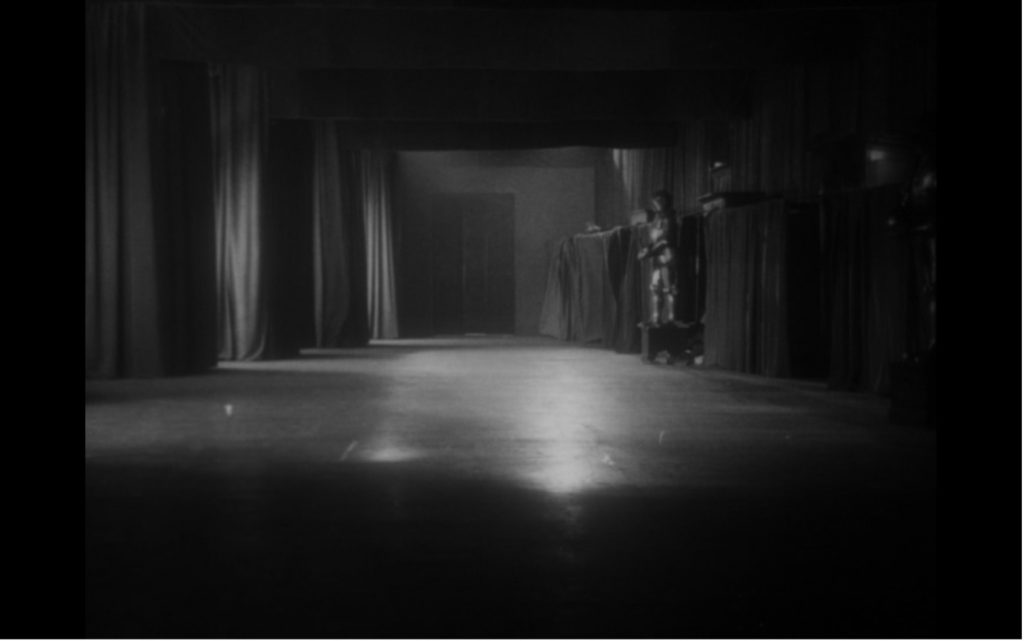
Fig.13. Jean Epstein, La Chute de la maison Usher, 1928. The wind fills the house and the curtains blow just under natural time, in slow motion. This set-piece is akin to the field described by Deleuze in his analysis of Bacon’s paintings.

Fig.14. Jean Epstein, La Chute de la maison Usher, 1928.The pendulum swings in slow motion. Note the detailed close-up on the mechanical object.

Fig.15. Jean Epstein, La Chute de la maison Usher, 1928. The characters, or figures, sit in wide view and the shot is presented in natural time. There is a juxtaposition here with the more amplified, slow motion close-up of the pendulum.

Fig.16. Jean Epstein, La Chute de la maison Usher, 1928. The internal workings of the clock tick over in real time.

Fig.17. Jean Epstein, La Chute de la maison Usher, 1928. Finally, Roderick Usher’s hands are presented in this montage of superimposed shots, utilising slow motion, fast motion, and jagged camera movement. As the figure, he is distorted and in contrast to the stable field (as presented in fig 15) Whilst the figure is not contorted, as in Bacon’s art, a similar breakdown of temporality, and distortion of regular physicality, is taking place.
Figuration / Sensation: Sentiment and Revelation
Returning to Bacon’s round area and Deleuze’s analysis, one can further discern the importance of the relation between figure or subject and the surrounding environment. Bacon creates compositions in which the figures are placed in relation to this round area. He creates a kind of amphitheatre. This amphitheatre effect is used to isolate the figure from the surrounding field. Deleuze distinguishes three fundamental elements in Bacon’s painting: material structure, the round contour, and the raised image. Deleuze explains this as the field operating as a ground, and the figure functioning as a form, on a single plane that is viewed at close range. [19] This coexistence of two immediately adjacent sectors constitutes an absolutely closed and revolving space.

Fig.18. Francis Bacon: Three Studies for a Crucifixion, 1962

Fig.19. Francis Bacon: Seated Figure, 1961
Bacon also uses shapes and forms to isolate the figure such as his famous cubes.
These spaces or areas do not confine the subject to immobility. Rather, they render a sense of movement and progression: the figure relates to the space and becomes a stand-alone image. Isolating the figure is important as it avoids the illustrative and narrative implications the image would necessarily have if it were not isolated. The figure is separated from representation. Being that Epstein asserted that photogénie enhances the moral dimension of a thing-in-the-world, one could alter this to say that photogénie is the enhancement of the figurative aspect of the thing-in-the-world. This is the crucial difference between Bacon and Epstein; that is that Bacon seeks to isolate an object to suspend all meaning in search of something real, whereas Epstein seeks to isolate an object in order to reveal its figurative relations with the real. In other words, Bacon freezes time to see an object, whereas Epstein isolates an object and moves it through space and time.
It is clear from a close reading of Deleuze’s analysis that for Bacon, representation, and the narrative that representation of a thing or a being (a figure) implies, is to be avoided. Figuration for Epstein is precisely where the meaning making process (a cinematic narrative) must begin. Sensation conceptually straddles both of these directions. Sensation is the isolation of the figure, and the use of temporal and spatial decomposition toward this aim, regardless of the differing outcomes of each of these artists.
Epstein’s style is attractive primarily because he explores moments; profound, experiential and fragmented moments. Moments in this sense to the cinema are much like thoughts or memories are to humans. They are not spectacles, nor are they true representations of reality. These cinematic moments are unique configurations of time and space that relate this Deleuzian concept of sensation. Cinema (photogénie and sensation) is not prosthetic. It is not a way to see better. It shapes and describes the world in its own right. The act of filming (planning, setting lights, camera, action and editing) is a quest to happen upon instances where the world reveals itself. This is the foundation of Epstein’s photogénie. Deleuze’s conception of sensation further enhances this point of view as sensation seeks to reveal the purely figurative and to discern the relations between things (object or living beings) and the world around them. It is clear that sensation can be taken as an augmentation of the theoretical project of photogénie.
Sensation, being the purely figurative, and the reveal of the relations between things, awakens a sentiment in the viewer. The moment in which the attention of a viewer is caught is the moment in which intuited, subconscious, knowledge about the world is revealed; therefore, revelation and sensation are the same phenomena; revelation being the emergence of thought, and sensation being the catalyst for that emergence.
Mobility and Modernity
In his writings on photogénie, Epstein further defines that which the cinema can reveal to be only ‘mobile’ aspects of the world [20] . Mobility is related to space and time. An object’s mobility, and therefore its photogenic quality, is a consequence of its variations in space-time. Movement makes evident the connectedness of things in the ontological world. In this way, objects take on dramatic significance as objects expressing mobility, by default, express a relationship with other objects and beings. Drama and the perception of things-in-the-world are correlated and entwined. In Epstein’s view, the cinema is endowing life upon objects; objects are imbued with meaning as they might be in the form of charms or amulets, or totems in other cultures and in other times [21] . This focus on objects and movement are related to something felt; a reaction within our perceiving psyche inspired by viewing a moving image. A primal, emotional, and sensational mode of seeing, perceiving and thinking is uncovered as a sequence of space and time combinations progress upon the screen.
Robert B. Ray describes it in this way:
… inadvertently, as the Impressionists and Surrealists saw, the movies glamorised everything: faces, clothes, furniture, trains. A dining car’s starched white linen (in North by Northwest), a woman’s voice (Margaret Sullivan’s in Three Comrades), a cigarette lighter (The Maltese Falcon) – even the most ordinary objects could become, as Sam Spade put it in a rare literary allusion, ‘the stuff that dreams are made of.’ [22]
This reaction that we as humans have to the moving image, to glamorise and to imbue objects with meaning, is exactly what ‘sensation’ as an aesthetic philosophy seeks out. Sensation is something felt when the artist or filmmaker has deployed techniques to bracket things-in-the-world and draw our attention to the connectedness of these things. In Epstein’s view, modernity emphasised connectedness and the objects of modernity needed to be investigated as a matter of course to reorient the modern human with their own synchronisation to a kind of modern teleology; their sense of Being in the material world [23] . The primary way in which modernity emphasised this connectedness was through mobility.
One could take the driving sequences of La Glace à trois faces as an example of this interest in mobility and in the objects of modernity; in this case, the automobile. Epstein relishes the journey to retrieve the car from the garage as much as he relishes the motion of the car itself. The elevator that brings the protagonist to the top floor of the carpark holds as much interest as the downward trajectory and spiral motion of the car’s descent to street level.

Fig.20 Jean Epstein, La Glace à trois faces, 1927. The elevator arrives at the top floor of the car park. The camera is fixed inside the elevator and the sensation of movement comes from the elevator’s upward journey; the camera peering out as the floors pass by.

Fig.21. Jean Epstein, La Glace à trois faces, 1927. The attendants help start the automobile. The framing is distant, and the figures are silhouetted. Interestingly, there is no close up on the protagonist. The character is left out of view for much of this sequence.

Fig.22. Jean Epstein, La Glace à trois faces, 1927. The car’s journey downward through the multi-storey carpark is tracked by a fixed camera taking on the point of view of the driver.

Fig.23. Jean Epstein, La Glace à trois faces, 1927. This point-of-view shot tracks the journey all the way through the carpark, creating a dizzying, spiral-like spectacle.
Similarly, in an earlier scene, the telephone takes on a special significance for Epstein. He turns his attention to communication technology by emphasising a kind of mystical wonder imbued by the protagonist toward the telephone in his office. As the protagonist contemplates using the telephone, a hypnotic sequence begins wherein a kind of collapse of space between sender and receiver is expressed. Repeated close-ups of the protagonist are cut in parallel with a track-in toward the telephone. The track-in toward the telephone is out-of-focus; an interesting juxtaposition as the purpose of the telephone is to bring a more efficient, more ‘focussed’ mode of communication. Intercut images of the phone lines make for a magnificent visual as a juxtaposition is established between the subjective human being (the protagonist) and the surrounding technological environment that influences and accommodates his behaviour. This sequence foregrounds some of the key concerns of sensation and photogénie: an animistic view of objects (especially technological objects), a focus on rhythm, and a disruption of coherent space and time representations. The result in this instance is a hypnotic effect. Perhaps the subtext could be read as a commentary of the hypnotic effect of the cinema-as-technological object itself.

Fig.24. Jean Epstein, La Glace à trois faces, 1927. The protagonist contemplates using the telephone to contact one of his lovers.

Fig.25. Jean Epstein, La Glace à Trois Faces, 1927. Intercut images of the telephone lines.

Fig.26. Jean Epstein, La Glace à trois faces, 1927. A medium-close-up of the protagonist reaching for the receiver.

Fig.27. Jean Epstein, La Glace à trois faces, 1927. A track-in toward the telephone.

Fig.28. Jean Epstein, La Glace à trois faces, 1927. The track-in gradually loses more focus.

Fig.29 Jean Epstein, La Glace à trois faces, 1927. A reverse close-up of the protagonist using the telephone.
Spirit, and the Instant and Present Moment
Whilst Epstein acknowledged narrative drama as an essential aspect of cinematic experience, his focus was on the unique qualities of the cinematic apparatus and its ability to record things-in-the-world. As previously described, Epstein was concerned with the transformative nature of recording: the ‘moral’ enhancement of things, beings, and souls [24] . This focus led Epstein to many innovations regarding visual language and the moving image. Stuart Liebman states:
Epstein was one of the first to use dramatic high and low angled shots […] More often than nearly any other French director, he also used close-ups, especially of objects and parts of the body […] Finally, he was one of the first directors to recognize the expressive significance of using slow and rapid motion. [25]
In Epstein’s work it can be observed that the formal and discursive qualities unique to moving visual language are asserted at the fore, ahead of narrative coherence. The formal and conceptual relationships between the images themselves are the mechanism by which the narrative action and the thematic terrain are revealed. The revealing of the narrative action and thematic terrain highlight the introspective effect of the cinematic experience on the audience.
Part of the goal of sensation and photogénie is to disrupt, or unnerve, the everyday habitual considerations and structures of the intellect. According to Mikhail Iampolski in his essay “The Logic of an Illusion” [26] , there is an assumption in the Western empirical tradition, running from René Descartes, through Immanuel Kant, John Stuart Mill and through developments in psychology in the 19th century (Hermann von Helmholtz thru Sigmund Freud) that the perceiving of the world takes place through the mental realm of logic. Iampolski asserts that photogénie seeks to re-orientate the viewer to perceiving the world in the instant and present moment, through the realm of the senses [27] . These developments that Iampolski outlines in 19th century psychology steer discourse in a direction that diminishes the sensational aspect of dreams and illusions and transforms these phenomena into products of the intellect. Photogénie is a method whereby the artist and the viewer step back from the logic of intellect and towards and engagement with the senses. Epstein writes:
Although everyone has their own particular understanding or misunderstanding of what could or could not be the living and the inanimate, matter and spirit, body and soul, almost all concur that the inert is thought to be only material, while beings sufficiently endowed with a vital quality are bestowed the privilege of also developing a spiritual quality, which reveals itself all the more clearly as forms become more complex, from animals to humans. Spirit is thus an aristocratic corollary of matter. [28]
Through engaging the sensational aspect of dreams and illusions Epstein seeks to express and ‘rediscover’ this notion of ‘spirit’. Another way to frame this concept is to say that he is conducting a study of the correspondence between the ontological world-as-it-is and the subjective human being. Cinema is the tool to establish this connection. Epstein appeals to the commodities available to all human beings to establish this connection: emotion and memory. We experience Epstein’s films in much the same way that we experience emotion and memory; fragmented, spatially and temporally inconsistent and focused on unexpected objects and moments in time. This technique serves to highlight what Epstein is calling a vital and spiritual quality unique to human consciousness.
In his discussion on the developments of psychology in the 19th century, Iampolski identifies that a focus was trained onto the importance of logic when considering how consciousness refined its import of the world. This focus on logic asserts that the world must be sequenced, with attention paid to grammatical relations between events (and objects). These relations give us our understanding of the world and thus the perceiving of the world takes place through the mental realm of logic. Illusions therefore are also a matter for the faculty of logic. Illusions are indicative of a breakdown of the logical connections the mind is making. They are symptomatic of the limits of the mind’s ability to process information and therefore not a natural phenomenon accounted for outside of the perceiving and structured consciousness that takes in the world and interprets it:
For Helmholtz, illusions don’t refute the law of causality, they only point to the weakness of our reasoning. [29]
However, a filmmaker like Epstein seeks to break the causal chain and logical underpinning of sequenced images and in some sense prefers to entertain the possibility of illusion. Epstein’s notion of photogénie effectively works to fragment this underpinning logic in order to peer through the veneer of reality strung together by images and reveal alternative ways of seeing.
It’s important to note that Epstein, like Bacon in his art, and Deleuze in his analysis, is engaging a phenomenological approach to the capability of an image (either through creation or in reflection) to reveal some aspect of reality to the viewer. He is stepping away from traditions of psychology, and psychoanalysis, and toward a less defined though more intuitive rendering of lived experience; primarily, a highlight of the connectedness and concurrent disconnectedness of things-in-the-world.
Disconnectedness in Six et demi onze (Epstein, 1928)
Whilst the focus on mobility seeks to emphasis the connectedness of things-in-the-world, it is also evident that Epstein equally sought to express disconnectedness. Modern existential alienation, and fear of technology, shares a concurrent emphasis to the fore mentioned examples of the automobile and the telephone, and is reflected primarily through the nihilism, or in the case of Roderick Usher ‘sickness’, of the protagonist characters. The protagonist of La Glace à trois faces seeks pleasure through frivolous encounters with women but rejects any further, emotional and meaningful relationship. He finds purpose and life-affirmation through the mobility and speed of his automobile and is eventually led to his death in a high-speed collision. The modern phenomena of technology, motion and speed has disassociated him from other human beings and led him to his demise. Similarly, in La Chute de la maison Usher, Roderick Usher possesses unexplained qualities of sensitivity that seem to be affected by, and affecting of, the environment around him, both temporally and spatially. Through this enhanced perceptiveness, Epstein details an undermining of the psychological coherence of the character and this ‘sickness’ is articulated as Roderick interacts with objects in the house; especially his artwork, the portrait of his sister Madeline. For visual effect the actress sits behind the portrait’s adorned frame, posing as if the painted image (fig.30). Epstein is substituting the real for the imagined. This is a visual cue to emphasize that efforts made to articulate and define the ontology of being-in-the-world, via employ of the metal realm of logic, can lead to nihilism and death. Roderick’s demise, mentally and physically, is linked to the ever-more-real incarnation of the portrait of Madeline.
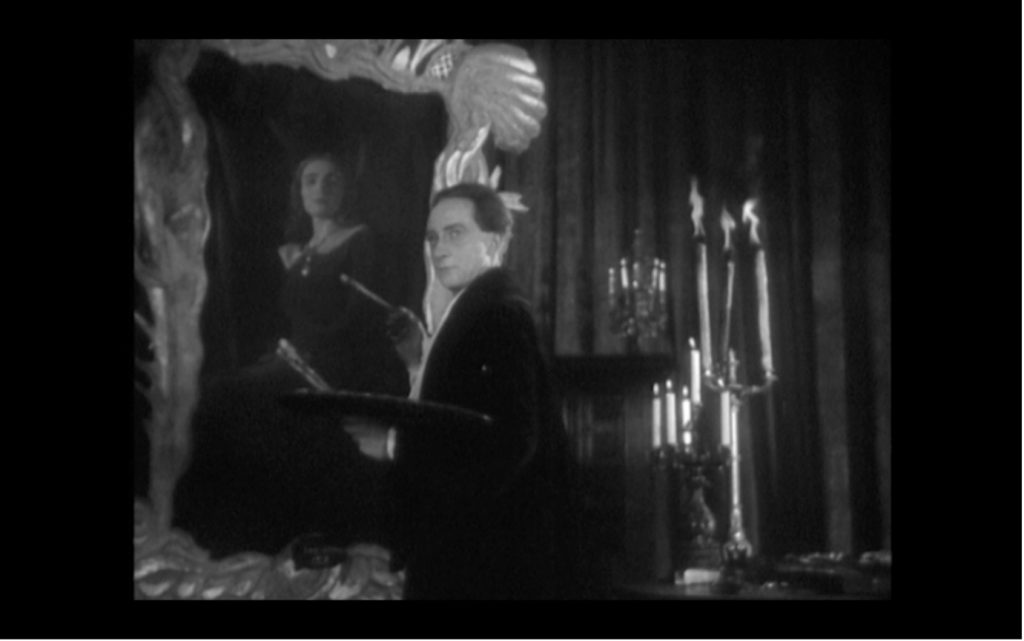
Fig.30. Jean Epstein, La Chute de la maison Usher, 1928. The portrait of Madeline.
This might be best illustrated by another of Epstein’s films, Six et demi onze (Six and One Half Times Eleven, 1928). The following sequence (figs 31 – 38) demonstrates both the fascination with the modern world, through the emphasis on the technology of the camera, and the notion of isolation, alienation and death that comes with this modern, disrupted teleology:

Fig.31. Jean Epstein, Six et demi onze, 1928. Jean (Nino Constantini), a surrealist and artist at heart, is fascinated with the camera. He is photographing his beloved Marie (Suzy Pierson).
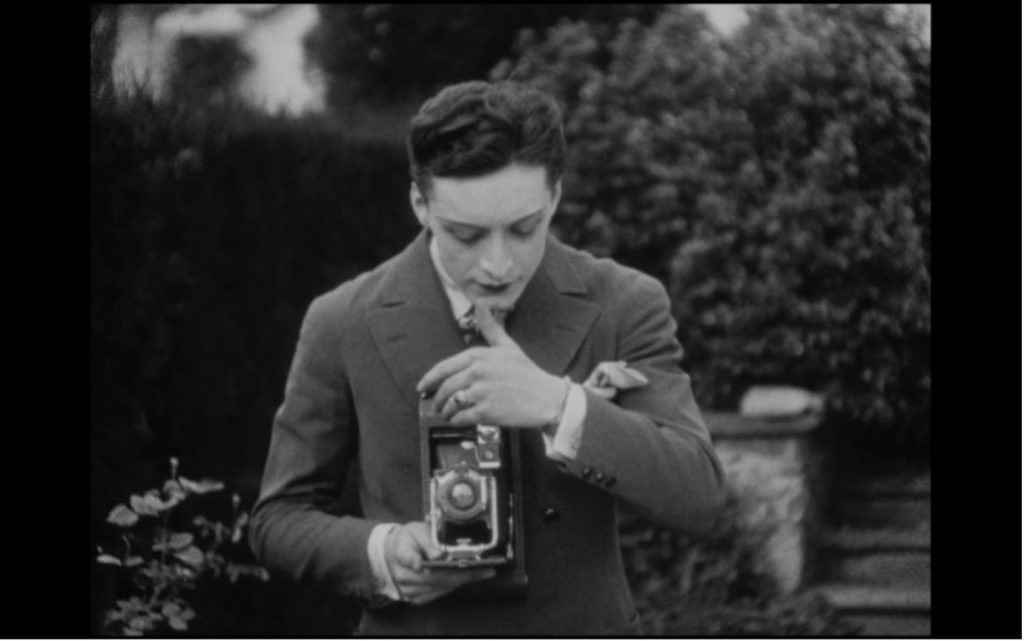
Fig.32. Jean Epstein, Six et demi onze, 1928. A medium establishing shot of Jean.
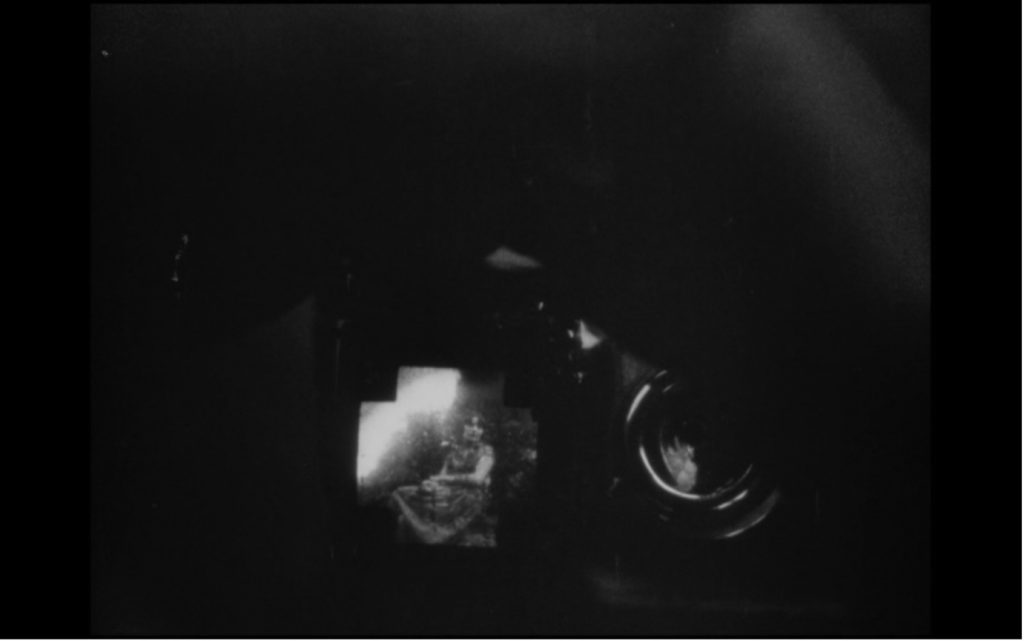
Fig.33. Jean Epstein, Six et demi onze, 1928. Jean’s point-of-view through the view finder of the camera.

Fig.34. Jean Epstein, Six et demi onze, 1928. A close-up of the camera as it captures a photograph.

Fig.35. Jean Epstein, Six et demi onze, 1928. Jean packs up his camera, pleased with his efforts.
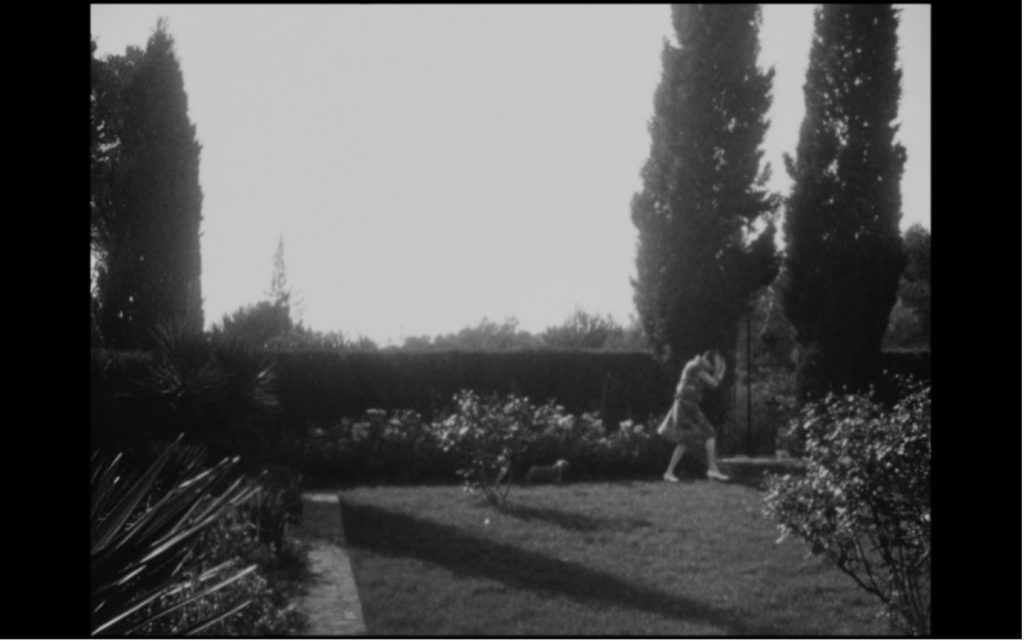
Fig.36. Jean Epstein, Six et demi onze, 1928. Marie suddenly, inexplicably, appears distressed and runs away.

Fig.37. Jean Epstein, Six et demi onze, 1928. Jean looks on; his gaze strangely inexpressive, unreactive to this turn of events. He is passive.
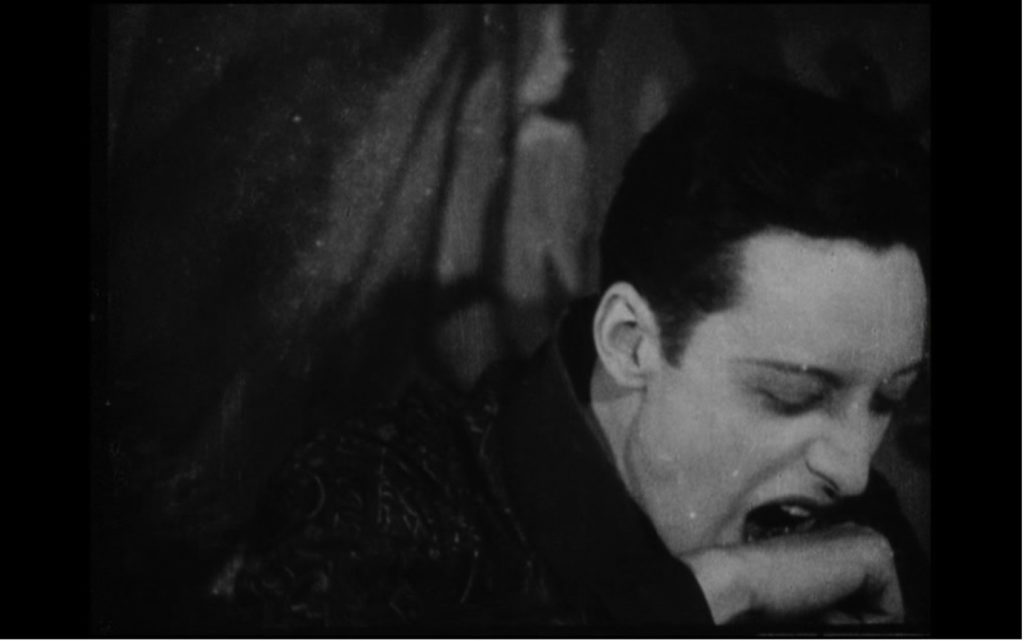
Fig.38. Jean Epstein, Six et demi onze, 1928. The previous shot transitions into this new location and scene in which Jean awakes from sleep. The disappearance of Marie seems to be unexplained and shrouded in doubt.
In Six et demi onze the act of taking the photograph ruptured the connection between the two lovers. A familiar use of superimposition in the transition from one scene and location to the next throws the established logic of the narrative into disarray. As the film progresses, the mental stability and psychological goal orientation of Jean is frayed resulting in his suicide. The disappearance of Marie spurs a labyrinthine series of events that leads the lover to the scene of Jean’s suicide months later. There is a tension at work here evident across most of Epstein’s work; a fascination with the both destructive power of technology, the alienation of individuals and their dissociation form their surrounds, and technology’s contradictory ability to emphasise the connectedness of people, the objects with which they surround themselves, and the environments in which they live.
Conclusion
There is a very real relationship between what we record, how we record it, how we watch it, and how our consciousness consumes and is consumed by it. The moving image has very real consequences for our perceptions of the world and of ourselves. The effects of figuration and sensation as described are not about allegory, metaphor, contemplation, or fantasy. Jean Epstein’s films are not narrative driven, thematic explorations of the human subjective interior, but rather expressions of forces that effect the human subjective interior. Photogénie offers a pathway for thinking and creation that activates an enquiry into such forces. Francis Bacon achieved an articulation of the spectacle of the human being’s movement through space and time (figuration), and the connectedness of beings, objects and their environments. Rather than precise articulation, Epstein used the cinema to explore these relations, and furthermore to emphasis the effect of modernity on the individual (the viewer).
Rather than proposing a definite theory of film, the heuretic methodology that arises from studies into photogénie is one in which the researcher sets out to create a series of interpretations and descriptions that gradually illuminate the human subjective interior, and give rise to sentiment for the viewer, which can be construed as a moral enhancement, to use Epstein’s wording. Above all, the aesthetics of photogénie (and sensation) promote a process of discovery and invention, not of conclusion and finality.
Notes:
[1] Jean Epstein, “On Certain Characteristics of Photogenie,” in French Film Theory and Criticism: a History/Anothology, 1907 – 1939, ed. Richard Abel (Princeton, New Jersey: Princeton University Press, c1988), pp. 314 – 318. Jean Epstein’s seminal essay in which he outlines early tenets of Photogenie as a theory for the cinema.
[2] Gilles Deleuze, Francis Bacon: The Logic of Sensation, trans. Daniel W. Smith (London, New York: Continuum, 2003) (First published: Editions de la Difference, 1981).
Deleuze’s treatise on Francis Bacon is a central text for this analysis.
[3] Gilles Deleuze, Francis Bacon: The Logic of Sensation. (trans. Daniel W. Smith). London, New York: Continuum, 2003. First published: Editions de la Difference, 1981.
[4] Robert B. Ray, “How a Film Theory Got Lost,” in How a Film Theory Got Lost and Other Mysteries in Cultural Studies, (Bloomington and Indianapolis: Indiana University Press, 2001), p. 4.
[5] Sarah Keller & Paul, Jason, Jean Epstein: Critical Essays and New Translations. Amsterdam: Amsterdam University Press, 2012.
[6] Katie Kirtland, “The Cinema of the Kaleidoscope,” and Lundemo, Trond, “A Temporal Perspective: Jean Epstein’s Writings on Technology and Subjectivity.” In Jean Epstein; Critical Essays and New Translations. Edited by S. Keller & J. N. Paul. Amsterdam: Amsterdam University Press, 2012.
[7] Robert Farmer, Robert, “Jean Epstein” Senses of Cinema: Great Directors series, Issue 57, (December 2010).
[8] Olaf Moller, “Becoming Jean Epstein,” Film Comment Vol. 42, issue 1. New York. (Jan/Feb 2006): pp. 19 – 21.
[9] Katie Kirtland, “The Cinema of the Kaleidoscope.” In Jean Epstein; Critical Essays and New Translations. Edited by S. Keller & J. N. Paul. Amsterdam: Amsterdam University Press, 2012. p. 93.
[10] Ibid p. 94
[11] Francois Truffaut, “A Certain Tendency of the French Cinema.” In Movies and Methods. Edited by Bill Nichols. Berkley, Los Angeles, London: University of California Press, 1976. Pp. 224 – 237.
In this seminal essay Truffaut outlines, and attacks, the tradition of deferral to literary traditions in French cinematic trends. This can be extended into institutional critiques of the cinema-arts that relied upon literary terms and frameworks; Truffaut calls for cinema-specific language, theory, and art. Interestingly, he fails to acknowledge Epstein, and others, immense contribution to this project during the 1920s.
[12] Sergei Eisenstein, “A Dialectic Approach to Film Form,” p. 47.
[13] Tom Gunning, “The Cinema of Attraction[s]: Early Film, Its Spectator and the Avant-Garde.” The Cinema of Attractions Reloaded, edited by Wanda Strauven, Amsterdam: Amsterdam University Press, 2006. Pp. 381–388.
[14] Gilles Deleuze, Francis Bacon: The Logic of Sensation, pp. x – xi.
[15] Gilles Deleuze, Francis Bacon: The Logic of Sensation, p. 34.
[16] Gilles Deleuze, Francis Bacon: The Logic of Sensation, p. 34.
[17] Felicity Colman, Deleuze & Cinema: The Film Concepts. Oxford, New York: Berg Publishing, Bloomsbury Publishing Plc. 2011. pp 25 – 39, 55 – 65, 131 – 147.
[18] Gilles Deleuze, Francis Bacon: The Logic of Sensation, p. 14.
[19] Gilles Deleuze, Francis Bacon: The Logic of Sensation, pp. 4 – 6.
[20] Jean Epstein, “On Certain Characteristics of Photogenie,” p. 315.
[21] Jean Epstein, “On Certain Characteristics of Photogenie,” p. 314.
[22] Robert Ray, “How a Film Theory Got Lost”. P. 6.
[23] Dermot Moran, Introduction to Phenomenology. London and New York. Routledge, Taylor and Francis Group, 2000. pp. 192 – 222. In this text Moran outlines Heidegger’s transformation of phenomenology in which he moved away from Husserl’s focus on epoche (the bracketing of conscious experience) and toward a focus on teleology and ontology.
[24] Jean Epstein, “On Certain Characteristics of Photogenie,” p. 314.
[25] Stuart Liebman, Jean Epstein’s Early Film Theory: 1920 – 1922. Ann Arbor MI. New York University PhD Dissertation. University Microfilms International, 1980. p. 11.
[26] Mikhail Iampolski, “The Logic of an Illusion: Notes on the Genealogy of Intellectual Cinema.” In Camera Obscura, Camera Lucida; Essays in Honor of Annette Michelson Ann Arbor MI. New York University, edited by Allen, R & Turvey, M. Amsterdam: Amsterdam University Press, 2003. p. 35.
[27] Mikhail Iampolski, “The Logic of an Illusion: Notes on the Genealogy of Intellectual Cinema,” p. 44.
[28] Jean Epstein, The Intelligence of a Machine, p. 6.
[29] Mikhail Iampolski, “The Logic of an Illusion: Notes on the Genealogy of Intellectual Cinema,” p. 38.
